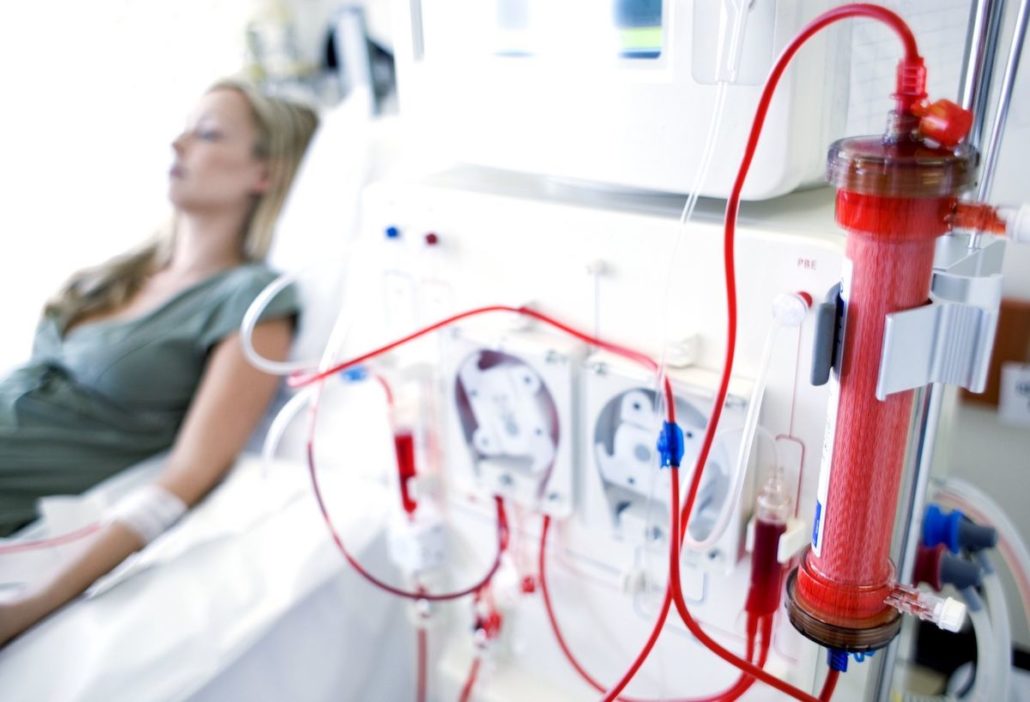Hepatitis and Cirrhosis Similarities and Differences
Alcohol is consumed by approximately 75% of the population of the United States, with a 7% incidence of alcoholism. In addition, alcohol accounts for approximately 100,000 deaths in the U.S. each year, with nearly 20% of those deaths attributable to cirrhosis. Alcohol abuse rates are higher for men than women and alcohol abuse presents a serious public health and social problems, all of which are preventable [1].
Excessive alcohol consumption could result in fatty liver disease or steatosis, alcoholic hepatitis, and eventually cirrhosis. Alcoholic hepatitis is a severe syndrome of alcoholic liver disease, characterized by rapid onset of jaundice, malaise, tender hepatomegaly, and subtle features of systemic inflammatory response. Alcoholic hepatitis usually progresses to cirrhosis if drinking is continued. For those who discontinue alcohol, hepatitis returns to normal within a few months, but the cirrhosis that has already occurred does not reverse.

About 20% to 40% of those who drink alcohol in heavy amounts and have fatty liver eventually develop liver inflammation, which is known as alcoholic steatohepatitis. Alcoholic steatohepatitis is a diagnosis based on liver histology, while AH is a clinical diagnosis. The amount of alcohol ingested is the most critical risk factor for developing chronic liver disease. However, even shorter durations of alcohol abuse could lead to alcoholic hepatitis.
There are three types of liver disease related to alcohol consumption: fatty liver, alcoholic hepatitis, or cirrhosis. Fatty liver disease occurs after acute alcohol ingestion and is generally reversible with abstinence. Fatty liver is not believed to predispose a person to any chronic liver disease if abstinence or moderation is maintained. Alcoholic hepatitis is an acute form of alcohol-induced liver injury that happens with consuming a large quantity of alcohol over a prolonged period. Alcoholic hepatitis can range in severity from asymptomatic derangement of biochemistries to liver failure and death. Cirrhosis involves replacing the normal hepatic parenchyma with extensive thick bands of fibrous tissue and regenerative nodules, resulting in the clinical manifestations of portal hypertension and liver failure.
General Symptoms of Liver Diseases
Liver disease symptoms may be present with hepatitis, cirrhosis, or any other conditions that result in dysfunction of or damage to the liver. These may include:
- Jaundice. Jaundice, a yellowish discoloration of the skin and the whites of the eyes (the sclera), is a common symptom of liver disease but has many possible causes. Jaundice occurs due to a build-up of bilirubin, a yellow pigment in the blood (hyperbilirubinemia). (Jaundice also occurs in babies, but this is a normal physiological process.) Jaundice can develop rapidly and dramatically (as with acute hepatitis or bile duct obstruction) or instead develop gradually and subtly.
- Enlarged breasts in male patients. Enlarged breasts, referred to as gynecomastia, are common with liver disease due to an increase in estrogen caused by liver dysfunction.
- Itching skin. Chronic itching (pruritis) is common with liver disease, and is due to bile salts, which build up in the skin. This itching usually occurs without a rash.
- Vomiting of blood. Vomiting of blood can be related to liver disease in several ways. One of the more ominous is esophageal varices. Esophageal varices are essentially varicose veins in the esophagus. Varicose veins in the legs develop due to poor blood flow in the legs, causing blood to back up and pool, while blood flow to the esophagus may increase due to damage of the liver, which causes portal hypertension and increased blood pressure in the liver. Portal hypertension is much more common with cirrhosis than hepatitis, as scarring acts as a “kink in the hose” for blood vessels traveling through the liver.
- An enlarged liver. In hepatitis, the liver often becomes tender and enlarged and can be felt below the ribs in the right upper quadrant of the abdomen. With cirrhosis, the liver often becomes small and firm and may feel like a rock when it is felt in the upper abdomen.
- Bacterial peritonitis. Peritonitis refers to an infection in the abdominal cavity.
- Ascites, or fluid in the abdomen. Ascites can cause abdominal swelling and bloating and, when severe, can result in shortness of breath due to the pressure of the abdomen pushing upward on the chest cavity.
- Mental confusion or forgetfulness. One of the primary functions of the liver is to “detoxify” the blood, that is, to remove toxins and other substances from the blood. When the function of the liver is compromised, these toxins can build up in the bloodstream. Hepatic encephalopathy is a condition characterized by lethargy, confusion, abnormal muscle movements, amnesia, and often a dramatic personality change. It is sometimes mistaken as Alzheimer’s disease, but is, in some cases, at least partly reversible.
- Fatigue. Chronic tiredness, the kind of tiredness that does not respond to a good night of rest, is extremely common in both hepatitis and cirrhosis.
More symptoms of acute hepatitis are possible, including bleeding gums, edema (or swelling) in your legs, sleep reversal and other sleep disorders, and loss of consciousness.
Alcoholic Hepatitis vs Cirrhosis and How to Differentiate
People who drink alcohol can still develop liver inflammation and injury, even if they never contract the hepatitis virus. This is because excessive alcohol consumption can lead to alcoholic hepatitis.
Although in many individuals the affected liver is able to regenerate its tissue and retain its function, severe hepatitis may progress to scarring of the liver tissue (i.e., fibrosis), cirrhosis, liver cancer (i.e., hepatocellular carcinoma), and chronic liver dysfunction. Hepatitis can have numerous causes, such as excessive alcohol consumption or infection by certain bacteria or viruses. One common cause of hepatitis is infection with one of several types of viruses (e.g., hepatitis A, B, or C viruses).
Alcoholic hepatitis is a separate condition from Hepatitis C Virus— it is a severe consequence of long-term alcohol abuse that lasts at least 20 years. Hepatitis due to both Hepatitis C Virus (HCV) and alcohol abuse can coexist. In fact, Hepatitis C Virus (HCV) infection is becoming a leading cause of cirrhosis, liver failure, and hepatocellular carcinoma. It is important to note that the Hepatitis C Virus is contagious. If a person is unsure if they have contracted the infection, they should take safety precautions to prevent others from coming into contact with their blood [3].
Early studies had reported that Hepatitis C Virus (HCV) infection (as well as infections with the hepatitis B virus) was particularly common among alcoholics, affecting 35 percent of alcohol-dependent people. However, those studies did not exclude the role of other potential risk factors, such as intravenous drug abuse and receipt of blood transfusions.

The study found that actively drinking alcoholic patients were more likely to show evidence of HCV in the blood than control patients, suggesting that alcoholism in some way is a predisposing factor for HCV infection. This conclusion is consistent with the prior observation that the presence of inflammation in the liver is strongly associated with the presence of antibodies to HCV in alcoholic patients who have no other known risk factors for the infection.
A 2017 study explains that since the liver is the main site of alcohol breakdown in the body, it is the organ that experiences the most damage from heavy alcohol use [4].
Alcoholic hepatitis is especially common in those who:
- Drink large amounts of alcohol
- Drink outside of mealtimes
- Have malnutrition
Symptomatology – Alcoholic Hepatitis vs Cirrhosis
Alcoholic Hepatitis
- Patients with alcoholic hepatitis have been abusing alcohol till the time of presentation; they look more ill and being symptomatic present to a physician
- Jaundice is usually one of the most common symptom. Some common mode of presentations are: jaundice – 50% of the patients, ascites in 30 – 60% and splenomegaly – 15% of the patients.
- Fever (even high grade) is seen in upto 50% of the subjects.
- Symptoms of variceal bleeding and hepatic encephalopathy are uncommon.
Alcoholic Cirrhosis
- Patients with alcoholic cirrhosis may not have abused alcohol for many years prior to presentation; most of them are well compensated, with only one-third being symptomatic.
- Ascites is usually the common symptom. Some common mode of presentations are: 40%, dilated abdominal wall veins – 60% and splenomegaly – 25% of the patients.
- High grade fever is not seen (unless there is superadded infection).
- Variceal bleeding and hepatic encephalopathy are quite common.
Investigations – Alcoholic Hepatitis vs Cirrhosis
Alcoholic Hepatitis
- Polymorphonuclear leucocytosis (upto) 20,000/mm3) is quite common.
- Platelet function is depressed, but there may not be thrombocytopenia. There is no evidence of hypersplenism.
- SGOT and SGPT are elevated upto 300 to 400 IU with SGOT/SGPT ratio > 2.
- Highest levels of rise of gamma glutamyl transpeptidase, glutamate dehydrogenase and tumour necrosis factor are seen in alcoholic hepatitis.
- Most of the elevated enzymes fall back to normal level within 1 week of abstinence.
- Isotope liver scan may show total absence of radiotracer uptake by the hepatic parenchyma (“Medical hepatectomy”) with avid uptake by the spleen and the bone marrow of vertebrae and the ribs. After a period of recovery, the liver scan may show normal tracer uptake.
- Liver biopsy histology:
- Three obligatory features for the histologic diagnosis are – ballooning degeneration of hepatocytes, with areas of necrosis, inflammatory cell infiltrates predominantly
- 20% of alcoholics show features of hepatitis on 18.3% of alcoholics show features of cirrhosis (6.7%) or in combination with cirrhosis (13.4%).8 Alcoholic hepatitis rarely is seen as an isolated pathology on liver biopsy. On most occasions it is seen in combination with either fatty liver or cirrhosis.
Alcoholic Cirrhosis
- Polymorphonuclear leucocytosis though seen may not be as high as in alcoholic hepatitis.
- Both platelet function and number are reduced and there is evidence of hypersplenism.
- SGOT and SGPT are usually normal.
- There is mild to moderate rise of gamma glutamyl transpeptidase and glutamate dehydrogenase in alcoholic cirrhosis.
- No significant fall in enzyme levels are seen over a period of time, even if abstinent.
- Isotope liver scan show inhomogeneous tracer distribution in the liver, with left lobe uptake greater than the right lobe, colloid shift to the spleen (“Hot spleen”) and visualisation of the bone marrow of the vertebrae. Liver scan picture does not show improvement over time.
- Liver biopsy histology:
- On liver biopsy the following features are seen- parenchymal necrosis, regeneration, scarring
- 18.3% of alcoholics show features of cirrhosis on biopsy; 5% as only cirrhosis and 13.4% in combination with alcoholic hepatitis. Thus alcoholic cirrhosis may be the only pathology alcoholic cirrhosis may be the only pathology
Management – Alcoholic Hepatitis vs Cirrhosis
Alcoholic Hepatitis
- Alcoholic hepatitis is usually reversible
- Treatment consists of abstinence and proper nutritional support. Liver transplantation is not recommended at this stage.
Alcoholic Cirrhosis
- Alcoholic cirrhosis is generally considered to be an irreversible lesion once it is established.
- Apart from abstinence and treatment of complications, liver transplantation may be a viable option.
Prognosis – Alcoholic Hepatitis vs Cirrhosis
Alcoholic Hepatitis
- Though high initial in hospital mortality of about 50%, long term prognosis of those who abstain from alcohol is very good.
Alcoholic Cirrhosis
- Though initial in hospital mortality may not be high (but depends on the mode of decompensation), long term prognosis is presentation and degree of hepatic dismal with nearly 50% 5 year mortality.
Treatment – Alcoholic Hepatitis vs Cirrhosis
Individuals with alcoholic hepatitis (AH) may also experience alcohol withdrawal symptoms. Mild to moderate symptoms include irritability, anxiety, headache, sweating, tachycardia, and hand tremors with clammy skin. Severe symptoms include delirium tremens in which the patient is confused and may have visual hallucinations along with agitation, convulsions, and fever.
The goal of treatment is to restore some or all normal functioning to the liver by addressing the underlying issue of alcohol abuse. You will need to stop drinking alcohol. To do this, you may need to be in an alcohol treatment program. Sometimes you may also need to change your diet. Scarring of the liver is permanent. But the liver is often able to repair some of the damage caused by alcohol so you can live a normal life.
Alcoholism is one of the primary causes of liver damage. Alcohol-associated liver disease is the leading cause of chronic liver disease. Chronic alcohol use will result in a progression from steatosis to alcoholic hepatitis and then finally to alcoholic cirrhosis. The complications associated with alcoholic liver damage can be severe. Significant alcoholic cirrhosis can increase the risk for liver cancer, other cancers, kidney failure, and dementia.
During your rehabilitation, the staff from We Level Up FL treatment facility will help you identify what caused your alcoholism and teach you skills that will help you change your behavior patterns and challenge the negative thoughts that led to your alcoholism. Sometimes, the pressures and problems in your life lead you to rely on alcohol to help you forget about them momentarily.
Please, do not try to detox on your own because the alcohol detox process can be painful and difficult without medical assistance. If you or someone you know is experiencing some early signs of liver disease, don’t wait and ask for medical help before it gets chronic like alcoholic hepatitis and alcoholic cirrhosis, it is important to intervene early. Learn more about alcoholic hepatitis vs cirrhosis. Call We Level Up FL today.
